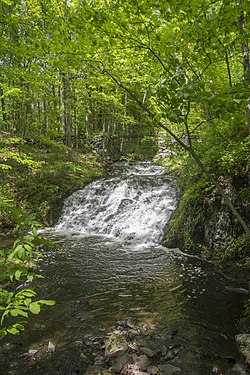
Dutchess County is a county in the U.S. state of New York. As of the 2020 census, the population was 295,911. The county seat is the city of Poughkeepsie. The county was created in 1683, one of New York's first twelve counties, and later organized in 1713. It is located in the Mid-Hudson Region of the Hudson Valley, north of New York City.
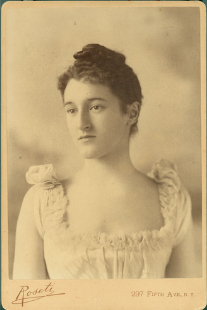
Beatrix Cadwalader Farrand was an American landscape gardener and landscape architect. Her career included commissions to design about 110 gardens for private residences, estates and country homes, public parks, botanic gardens, college campuses, and the White House. Only a few of her major works survive: Dumbarton Oaks in Washington, D.C., the Abby Aldrich Rockefeller Garden on Mount Desert, Maine, the restored Farm House Garden in Bar Harbor, the Peggy Rockefeller Rose Garden at the New York Botanical Garden, and elements of the campuses of Princeton, Yale, and Occidental.

Hyde Park is a town in Dutchess County, New York, United States, bordering the Hudson River north of Poughkeepsie. Within the town are the hamlets of Hyde Park, East Park, Staatsburg, and Haviland. Hyde Park is known as the hometown of Franklin D. Roosevelt, the 32nd president of the United States. His house there, now the Home of Franklin D. Roosevelt National Historic Site, is listed on the U.S. National Register of Historic Places, as are the homes of Eleanor Roosevelt, Isaac Roosevelt, and Frederick William Vanderbilt, along with Haviland Middle School.

The Culinary Institute of America (CIA) is an American private college and culinary school specializing in culinary, baking, and pastry arts education. The school's primary campus is located in Hyde Park, New York, with branch campuses in St. Helena and Napa, California; San Antonio, Texas; and Singapore. The college, which was the first to teach culinary arts in the United States, offers associate, bachelor's, and master's degrees, and has the largest staff of American Culinary Federation Certified Master Chefs. The CIA also offers continuing education for professionals in the hospitality industry as well as conferences and consulting services. The college additionally offers recreational classes for non-professionals. The college operates student-run restaurants on its four U.S. campuses.

The Little White House was the personal retreat of Franklin D. Roosevelt, the 32nd President of the United States, located in the Historic District of Warm Springs, Georgia. He first came to Warm Springs in 1924 for polio treatment, and liked the area so much that, as Governor of New York, he had a home built on nearby Pine Mountain. The house was finished in 1932. Roosevelt kept the house after he became President, using it as a presidential retreat. He died there on April 12, 1945, three months into his fourth term.

Margaret Lewis Norrie State Park is a 356-acre (1.44 km2) state park in Dutchess County, New York in the United States. The park is located on the east shore of the Hudson River in the Town of Hyde Park and also includes Esopus Island.

The Home of Franklin D. Roosevelt National Historic Site preserves the Springwood estate in Hyde Park, New York. Springwood was the birthplace, lifelong home, and burial place of the 32nd president of the United States, Franklin D. Roosevelt. The National Historic Site was established in 1945.

Eleanor Roosevelt established Val-Kill Industries in 1927 with Nancy Cook, Marion Dickerman, and Caroline O'Day, three friends she met through her activities in the Women's Division of the New York State Democratic Party. Val-Kill was located on the banks of a stream that flowed through the Roosevelt family estate in Hyde Park, New York. Eleanor and her business partners financed the construction of a small factory to provide supplemental income for local farming families who would make furniture, pewter, and homespun cloth using traditional craft methods. Capitalizing on the popularity of the Colonial Revival, most Val-Kill products were modelled on eighteenth-century forms.

The U.S. Post Office in Rhinebeck, New York serves the 12572 ZIP Code. It is located on Mill Street just south of the intersection with NY 308 at the center of the village.

The U.S. Post Office in Hyde Park, New York, serves the 12538 ZIP Code. It is a stone building in the Dutch Colonial Revival architectural style, located on East Market Street just east of US 9.

Top Cottage, also known as Hill-Top Cottage, in Hyde Park, New York, was a private retreat designed by and for Franklin D. Roosevelt. Built in 1938 to 1939, during Roosevelt's second term as President of the United States, it was designed to accommodate his need for wheelchair accessibility. It was one of the earliest such buildings in the country, and the first significant building designed by a person with a disability.

Margaret Lynch Suckley was a sixth cousin, intimate friend, and confidante of US President Franklin D. Roosevelt, as well as an archivist for the first American presidential library. She was one of four women at the Little White House with Roosevelt in Warm Springs, Georgia, when he died of a cerebral hemorrhage in 1945.
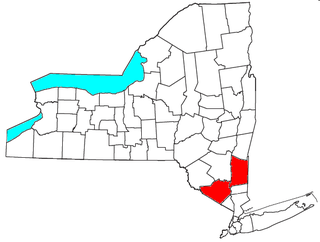
The Poughkeepsie–Newburgh–Middletown Metropolitan Statistical Area, as defined by the United States Census Bureau, is an area consisting of two counties in New York's Hudson Valley, with the cities of Poughkeepsie, Newburgh, and Middletown as its principal cities. As of the 2020 census, the MSA had a population of 679,221 The area was centered on the urban area of Poughkeepsie-Newburgh.

Ogden Mills & Ruth Livingston Mills State Park, also known as Mills Memorial State Park, is a 750-acre (3.0 km2) state park located in Staatsburg in Dutchess County, New York. It is off U.S. Route 9, between Rhinebeck to the north and Hyde Park to the south, at an elevation of 39 feet (12 m) above sea level. The park is bounded by the Hudson River on the west.

The Poughkeepsie Yacht Club (PYC) is a small private yacht club based in the Hudson River Valley in upstate New York. The club is one of the earliest yachting institutions in America and founded in 1892. The club is located on the eastern shore in the heart of the Hudson Valley, on a part of the Hudson River about halfway between New York City and Albany. It shares a close proximity to the Hyde Park historic sites and the town of Rhinebeck. Its officers include a Commodore, Vice-Commodore, Rear-Commodore, Measurer, Secretary, and Treasurer.
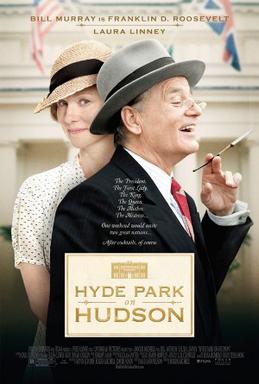
Hyde Park on Hudson is a 2012 British historical comedy-drama film directed by Roger Michell. The film stars Bill Murray as Franklin D. Roosevelt, Olivia Colman as Queen Elizabeth, and Laura Linney as Margaret "Daisy" Suckley, a cousin and childhood friend of the President. It was based on Suckley's private journals and diaries, discovered after her death, and fictionally dramatizes her close personal relationship with Roosevelt and the 1939 visit of King George VI and Queen Elizabeth to Roosevelt's country estate.

Fishkill Farms is a farm located in East Fishkill in Dutchess County, New York.

The Culinary Institute of America at Hyde Park is located in the town of Hyde Park, New York, between the Hudson River and U.S. Route 9. The Culinary Institute of America (CIA) campus offers associate and bachelor's degrees and certificate programs in culinary arts and baking and pastry arts. It is the school's primary and largest campus, with about 2,300 students.

The history of the Culinary Institute of America (CIA) began in 1946 in New Haven, Connecticut, where it was founded as a vocational institute for returning veterans of World War II. With a growing student body, the Culinary Institute purchased a former Jesuit novitiate in Hyde Park in 1970, which remains its central campus. The school began awarding associate degrees in 1971 and bachelor's degrees in 1993. The school opened its St. Helena campus in 1995, its Texas campus in 2008, its Singapore campus in 2010, and its Napa campus in 2016.
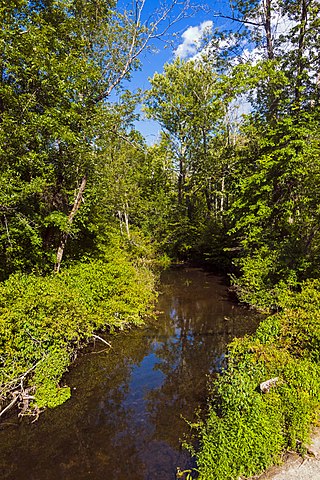
The Saw Kill is a 14.3-mile-long (23.0 km) tributary of the Hudson River, called the Metambesem by the Algonquin people of the area and sometimes called Sawkill Creek today. It rises in the town of Milan and drains a 22-square-mile (57 km2) area of northwestern Dutchess County, New York, that includes most of the town of Red Hook to the west and part of Rhinebeck to Red Hook's south.
